Fifth Circuit Review – Reviewed: When Congress Says ‘No Court,’ It Means No Court
There’s a saying among Fifth Circuit clerks, practitioners, and court-watchers: “Hated, adored, never ignored.” But when it comes to administrative law, that last part hasn’t really been true lately. In recent months, the flow of administrative and regulatory opinions from the Fifth has slowed to a crawl. The reason is pretty simple: politics. During the Biden years, challengers to federal policy flocked to the Fifth and usually found a warm reception. With Trump back in the White House, challengers prefer to file elsewhere.
That said, the court recently handed down an admin-adjacent opinion that’s worth a closer look. The case is Burgess v. Whang, and it’s a good reminder of how Congress can close the courthouse doors in favor of administrative resolution.
When Cornelius Burgess, the former CEO of Herring Bank, tried to block the Federal Deposit Insurance Corporation’s (FDIC) enforcement action against him, he ran straight into one of the clearest jurisdictional bars in federal law. In Burgess, the Fifth Circuit held that 12 U.S.C. § 1818(i)(1) strips district courts of jurisdiction to enjoin FDIC enforcement proceedings, even when the claims are constitutional.
The FDIC’s case against Burgess stretches back more than a decade. The agency started investigating him in 2010 and filed charges in 2014. An Administrative Law Judge (ALJ) recommended he be removed, banned from banking, and fined $200,000, which the FDIC Board adopted in 2017. Burgess appealed, arguing that the ALJ was unconstitutionally appointed. Then the Supreme Court’s decision in Lucia v. SEC, 583 U.S. 1089 (2018), confirmed that ALJs are indeed officers who must be properly appointed. So, the FDIC started over and assigned the case to a constitutionally appointed ALJ, Jennifer Whang. Unfortunately for Burgess, she recommended the same result.
Before the FDIC Board could adopt Whang’s recommendation, Burgess went to federal district court. He argued that FDIC officials and ALJs were too insulated from removal and that he had a right to a jury trial. The district court said it had jurisdiction despite § 1818(i)(1)’s clear language. The court rejected Burgess’s removal claims but bought the jury-trial argument. On the basis of that alleged constitutional violation, the court enjoined the FDIC from issuing its order.
On appeal, the Fifth Circuit had a simple answer: § 1818(i)(1) says what it means and means what it says. The statute declares that “no court shall have jurisdiction to affect by injunction or otherwise the issuance or enforcement of any [FDIC] notice or order.” That’s an express bar, the Court held. Congress laid out the process: the FDIC conducts the proceeding, the Board issues a final order, and judicial review happens in the courts of appeals under § 1818(h)(2). The only exceptions are spelled out in the statute, and Burgess’s case wasn’t one of them.
Burgess tried to rely on Webster v. Doe, 486 U.S. 592 (1988), which suggested courts shouldn’t read statutes to cut off constitutional claims without a clear statement. But the panel said this isn’t a Webster situation because Burgess isn’t left without a forum. He can still raise his constitutional claims when he petitions for review of a final FDIC order. Citing Elgin v. Department of Treasury, 567 U.S. 1 (2012), the court explained that channeling claims to appellate review is exactly what Congress intended.
The opinion also situates the case in the broader landscape of administrative adjudication. In Cochran v. SEC, 20 F.4th 194, 200 (5th Cir. 2021), and Axon v. FTC, 598 U.S. 175 (2023), plaintiffs could press pre-enforcement constitutional claims because the relevant statutes didn’t have an explicit jurisdictional bar. Section 1818(i)(1) is different—it says the quiet part out loud. As Justice Gorsuch explained in his Axon concurrence, that section is pretty clear.
Damonta D. Morgan is an attorney at Forman Watkins & Krutz LLP in Jackson, MS.



